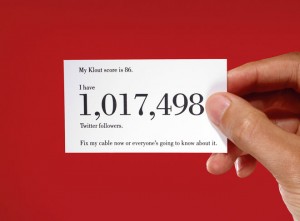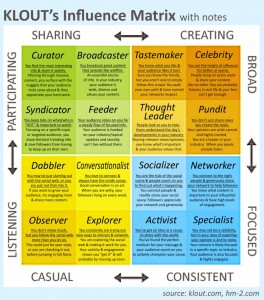Social media has officially taken over, infiltrating every aspect of our lives. There’s an app for almost everything, from dating to dining and everything in between. Brands and businesses are now capitalising on our obsession with the online, and finding ways to convince us into consuming things we don’t need. Why is it that something seems so much cooler when that hot girl from instagram is wearing it? It might not be as random as we think.
Influencer Marketing is the process of developing relationships with influential people that can drive an audience towards greater visibility of your product or service. Whilst not restricted to online marketing in the digital realm, the continuing and rising dominance of social media as a source of news and entertainment. Influencers who have something great to offer a particular market are more attractive to potential businesses. For example, a YouTube beauty vlogger will be extremely attractive to Revlon, a makeup brand. Furthermore, a brand that can develop a great relationship will benefit from a higher quality of marketing power.
Moz.com identifies three key ways that an influencer can impact your business:
“1.They can write a blog post / article about you.
2.They can share information about you in their social media accounts.
3.They can ask you, or permit you, to guest post on their site.
4.Or, any combination of, or all of, the above.”
The power of influencer marketing lies in the huge audience that influencers have over an audience. Brands often struggle to have large followings on social media due to the limited range of possible posts. For example, Sportsgirl, an extremely popular Australian fashion brand has 182k followers on their instagram page. This seems like a large audience, but how can they expand their audience more?
The use of influencers has the potential to multiply their audience by 500%. Mimi Elashiry, an immensely popular instagram ‘celebrity’ has 690k+ followers, and her personal style and posts would perfectly compliment Sportsgirl’s aesthetic. Her posts regularly attract 30-50 thousand likes, compared to Sportsgirl’s comparatively meagre 3,000 likes per post. This is just one example of how influencer marketing can significantly grow an audience for a brand.
In this interesting episode of Social Zoom Factor, Pam Moore discusses influence marketing, how it can positively affect businesses and how it can be misused by brands for little to no effect. Moore suggests tips and ideas that businesses can adopt in order to create greater influence over an online audience, particularly the importance of “being part of a community or network of content creator’s who have a similar interest or are in the same field as yourself/your brand”.
Moore suggests the role of an influencer is more than about how many followers you have, or how high your Klout score is. Instead, she suggests that the more knowledgable an Influencer is on a particular subject, the more they have to bring to the table.
The voice of the customer has always been an invaluable marketing tool for business and according to Forbes contributor Kyle Wong, social media has become “one giant megaphone for that voice” (2014). Wong suggests that social media has changed the balance of power between consumer and brands as it “allows peers’ recommendations to play a much bigger role in purchase decisions”. As such, the role of the influencer is extremely potent as influencers are more than just friends, peers or colleagues. They are aspirational, knowledgable and trustworthy members of our networks.
The concept of Influencer Marketing has been previously explored in Malcolm Gladwell’s famous novel ‘The Tipping Point’. Gladwell identifies influencers, or “mavens” as he calls them, as people who have a lot of knowledge about a particular field, product or topic. Often these influencers are far more valuable for a brand than people with a large audience. Gladwell explains:
“A Maven is a person who has information on a lot of different products or prices or places. This person likes to initiate discussions with consumers and respond to requests … they like to be helpers in the marketplace … This is the person who connects people to the marketplace and has the inside scoop on the marketplace.”
KLOUT is a website that assigns scores to individual’s or companies level of influence on social media platforms. It takes in factors such as number of followers and the success of posts (likes, shares) sand converts that into a score. The more platforms an individual uses, the greater the score. The higher the score, the ‘greater’ your influence. Klout explains it on their website as;
“When you share something on social media or in real life and people respond, that’s influence. The more influential you are, the higher your Klout Score.”
Wired.com contributor Seth Stevenson muses that our Klout score is beginning to “infiltrate more and more of our everyday transactions…[such as] luxury shopping site Gilt Groupe began offering discounts proportional to a customer’s Klout score.” Furthermore, Klout scores are beginning to play a major part in recruitment, particularly in the media, business and marketing industries.
Out of interest I logged on to see my Klout score as it had been a while since I’d last checked. I was somewhat disappointed by the meagre 42 but happy to see that I had reached 55 in the last month. Whilst I don’t use social media a lot, it pleases me to know that if I put a little bit of effort in, my Klout score can grow. This all seems a little superficial and silly to worry about, but I believe it is important to me, especially as I venture out into the world of full time work. In the aforementioned Seth Stevenson piece for Wired, he regales the story of a man whose employability and successful job interviews rose immeasurably after he spent a few months dedicating himself to growing his Klout score. This is not the first instance of a Klout score affecting one’s employability, and it certainly won’t be the last. Businesses want staff member’s who have large networks and know how to effectively use social media and online platforms to share content and influence others.
The above image is the ‘Klout Influence Matrix’, depicting the multitude of different influencers and the ways which their different influential styles can sway an audience. Raymond Morin created a simpler list of the five main types of Influencer’s found on social media, derived from Klout’s matrix. These include the networker, the opinion leader, the discover, the sharer, and the user.
Some examples of popular Australian personalities who have built an online present and would fit into these categories include Tully Smyth, ‘the networker’, a beauty fashion and lifestyle blogger who has amassed a huge following on all her social media accounts. She also regularly mingles with other ‘social media celebs’ and openly labels herself a “social media butterfly”. Lauren Curtis, ‘the opinion leader’, is often called Australia’s number one beauty guru, and for good reason. She has close to 3 million subscribers on her YouTube channel and is regularly approached by large beauty houses to promote/advertise their products in a seemingly casual, peer-to-peer manner.
The importance of the role of the influencer is now so prevalent that companies have begun openly and transparently assigning influencers to their brands. In 2014, Melbourne Spring Fashion Week introduced ten ‘MSFW Influencers’ who were to provide “exclusive behind the scenes content and an insider’s look at over 100 MSFW events”. These influencers included popular fashion bloggers Street Smith and Melbourne Girl. The use of the word ‘Influencer’ is now unashamedly used and is entering the everyday joe’s lexicon. Not only is this transparent advertising, it’s also very, very clever.
In enlisting the use of social media influencers for any future projects I may work on as a digital marketing coordinator or communications specialist, I will need to be smart about which Influencers I will rally for the publicity of a brand/organisation. As chronicled in ‘The New Influencers: A Marketer’s Guide to the New Social Media’ by Paul Gillin, Andy Abramson (a successful PR practitioner and blogging pro) suggests these helpful tips for the use of Influencers (in particular bloggers) in marketing (pg 51);
- Choose bloggers carefully – prolific writers with “links” in the community
- Don’t insult their intelligence – don’t treat bloggers and social media content creators as ‘second rate journalists’
- Be transparent – self reporting bad news actually makes you more credible
- Be responsive – give real time answers to both your bloggers and the audience. You have the tools, so use them.
I’ll certainly be taking these tips into consideration as I venture out into the media/communications workforce, hopefully uncovering the next big Influencer.
Sources:

